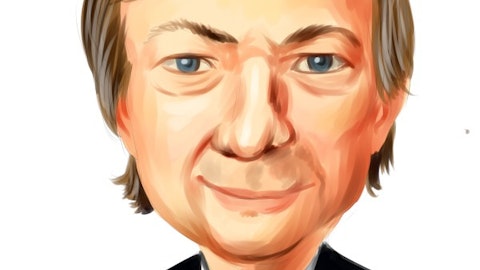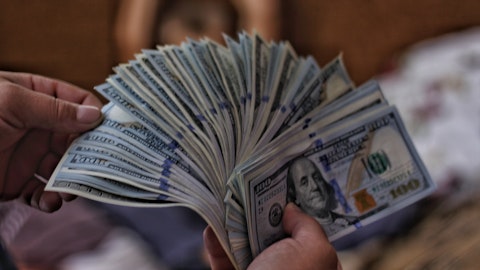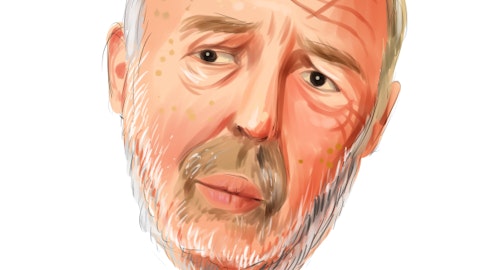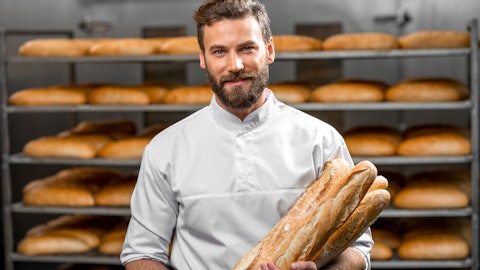But again, just given the uncertainty and the relative weakness of the category, we thought caution was prudent at least at this point.
Robert Dickerson: All right. And then pardon me for asking a third quickly. Just the California legal decision, you had said in the prepared remarks, your decisions shouldn’t be made any time sooner than March 1. Could you just maybe just add a little color as to kind of what that decision could imply like if decision goes one way, we likely would incur punitive damage or what have you, I’m not sure, or probably there’s not some material impact. I’m just trying to understand kind of what that could mean relative to the current guide?
Riyals McMullian: Yes. So we’ve already announced what the settlement will be in terms of cost of the company. I think probably the more relevant answer to your question is what happens post March 1 if the settlement is approved? And what will happen, if that is the case, is that we will then set about converting all of the distributors in California to an employee-based model. That is at least out the gate, likely to be somewhat dilutive to our results out in California at least in the short term until we can get everybody trained up, et cetera, bring all the employees on. The good news there is, though, it will be a phased-in approach, Rob. So we have 12 months from the date of the settlement to get that done. So we’d expect — I think we said in the prepared remarks, probably first quarter of ’25, that conversion should be complete.
Operator: Our next question comes from the line of Bill Chappell with Truist Securities.
William Chappell: Just a little bit more maybe commentary on the foodservice, the cake business, kind of the thoughts there, in particular, kind of what initiatives we’re looking at to kind of improve on the tasty cake side or just to cake in general and kind of how you see the trends play out for there versus the core?
Riyals McMullian: Yes. So I think we’ve mentioned this a couple of times on prior quarter calls, but good question. I’d like to discuss it some more. So clearly, pricing has been important in both of those areas, all of those areas, private label food service and the cake business. And we’ve also, as you know, done some pretty significant SKU rationalization and strategic business exits, primarily in foodservice and cake, but also a little bit in private label. However, the profitability of all three of those businesses has improved markedly. So the strategy is working from that standpoint. And obviously, there are offsets in other parts of the business, the soft variety and white bread area, Bill, as you know, is the most susceptible to private label trade down.
So obviously, that’s a negative. And then offset by the DKB performance in terms of unit volume. But frankly, even DKB’s profitability was down last year pretty significantly because we had substantially higher organic wheat cost last year. Now the margins are still very attractive for Dave’s. I know we don’t disclose particular numbers there, but still among the highest in the portfolio. But they were down roughly 500 basis points last year just because of the increased organic wheat costs, which this year will moderate somewhat. So we’ll recapture some of that. So really good progress on those parts of the business, somewhat offset by category weakness in commodity cost and those effects on other parts of the business.
William Chappell: Okay. And then a little bit on the commodity front. I guess, historically, you’ve just kind of said, hey, we hedged six to nine months out. I know it’s most of the same thing, but this time, you’re saying, hey, we’re 70% locked on your input costs. So is there any change to how you’re looking at things? Or we’re just using percentages versus months?
Steve Kinsey: No, not really, Bill. We continue to look at our strategy to be 6 to roughly 12 months out. So probably more in the lower term of that in some cases. But the reality is, I think last year, coming into the year, we were roughly 60%, 65% coverage. So we stay pretty steadfast to our overall strategy. We do — we have added some things kind of to the toolkit, if you will, to try to manage the volatility, the training there better. But no changes to how we think about coverage and how long we’re planning, how long we’re willing to go.
William Chappell: Got it. And no — and actually one follow-up on the DKB bars, is there — and I’m sorry if I — if you already covered this, but is there something you can you’re seeing repeat rates or something that gives you, it’s just a little pushback we here is it’s a crowded category. And I know DKB has a great brand, but how you differentiate yourself or get incremental shelf space versus the 20 other bars that are there? And what gives you that confidence what you’ve seen over the past three, four months in terms of as you expand this year?
Riyals McMullian: Yes. So as we noted in the prepared remarks, really pleased with the results in ’23. We got a lot more stores than we had targeted. First of all, it’s a great product. And we think that’s what differentiates us. I mean that’s what differentiates the loaf items and the breakfast items, it’s just the superior quality. It’s a baked bar, great flavor and texture, great nutritional panel on it. A lot of the bars in that category are cold-pressed. So we have more of that fresh baked flavor, which you can — if you’ve tried them, you can certainly attest to. But you are right about shelf space. I mean we’re only three SKUs on the shelf. And so positioning is really important. And what we’re seeing where our positioning is strong, kind of middle, high level on the shelf even with those three SKUs, the standout colors we have are really drawing consumers to the brand, whether they’re current DKB shoppers or they’re new to the brand, which is net incremental to the DKB consumer base.





